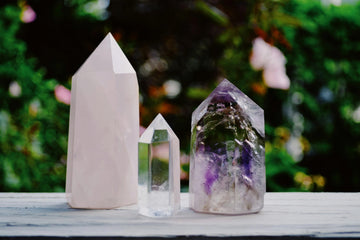Perfume enthusiasts and perfumers alike often draw inspiration from the world around them, and one of nature’s most fascinating sources is crystals. The formation of crystals—their structure, clarity, and symmetry—can inspire innovative approaches in crafting Perfume Essential Oils that are pure, layered, and distinct.
Understanding Crystal Formation
Crystals form when molecules align in highly organized, repeating patterns, creating a structure that is both visually striking and chemically stable. The purity of a crystal often determines its brilliance and energy. In perfumery, this concept translates into the careful selection of high-quality essential oils and fragrance components. Just as crystals require precise conditions to achieve their perfect form, luxury perfume oils demand meticulous blending techniques to reach their full aromatic potential.
Translating Crystal Purity into Perfume Essential Oils
The clarity and purity of a crystal can inspire perfumers to focus on clean, unadulterated fragrance profiles. For example, a perfumer might select a single-origin jasmine or rose oil with minimal processing to replicate the crystal’s unblemished essence. This approach ensures that each note in the fragrance is distinct yet harmoniously integrated, much like the facets of a well-formed crystal.
Crystal Symmetry and Scent Layering
Just as crystals exhibit symmetrical patterns, Perfume Essential Oils benefit from balanced composition. By layering top, middle, and base notes in precise ratios, perfumers can create a fragrance that mirrors the harmony and geometry found in crystal formations. This technique also enhances the longevity and projection of the scent, giving it a luxurious, multidimensional character.
Innovation Inspired by Crystal Structures
Crystals vary in form—from hexagonal quartz to cubic fluorite—and each shape can inspire unique olfactory experiences. Hexagonal patterns may inspire floral or fresh notes with a light, airy quality, while more robust cubic structures could translate into woody, resinous, or spicy fragrances. By observing natural crystal formations, perfumers find endless opportunities to innovate, crafting signature scents that are visually and aromatically captivating.
Crafting Signature Perfume Essential Oils
When designing high-quality perfume oils, perfumers often consider not only aroma but also the emotion and experience a fragrance conveys. Drawing inspiration from crystal formations emphasizes purity, balance, and structural integrity. This perspective allows fragrance designers to develop bespoke scented oils that are both sophisticated and deeply resonant with nature’s intrinsic elegance.
Conclusion
The science and beauty behind crystal formation provide a powerful framework for Perfume Essential Oils creation. By embracing the purity, symmetry, and structure of crystals, perfumers can craft fragrances that are unique, luxurious, and deeply inspired by nature. Whether creating a soft floral bouquet or a rich, resinous aroma, the lessons from crystals guide the artistry of scent design.




